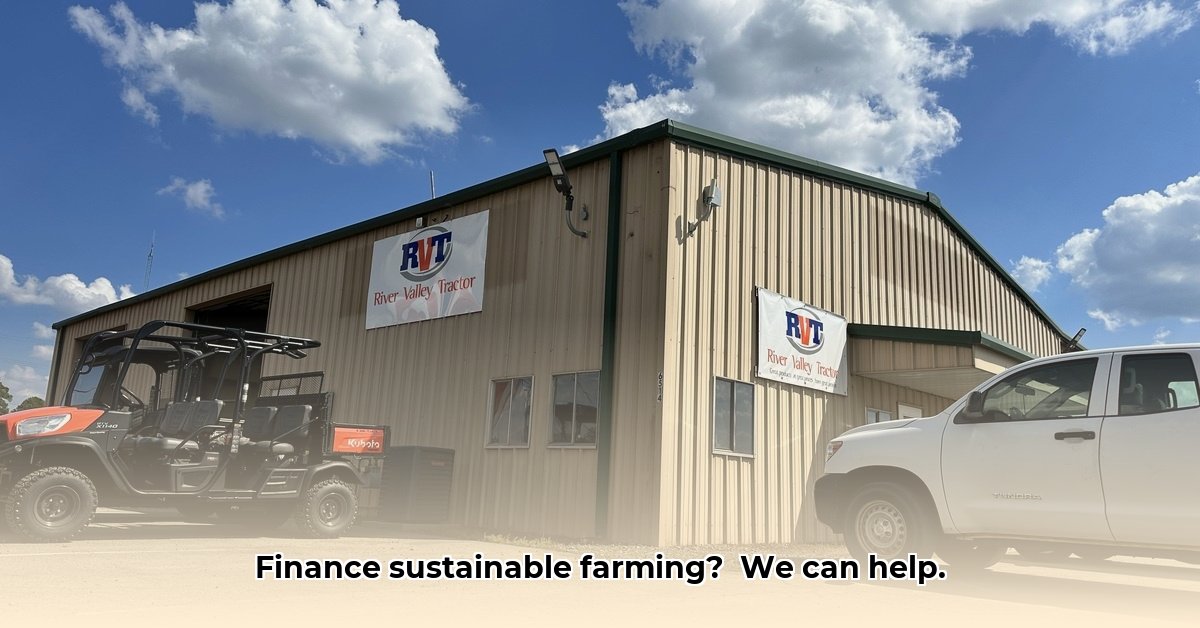
Texarkana farmer, Martha Jones, wiped sweat from her brow, gazing across her sun-drenched fields. The old tractor sputtered, a familiar soundtrack to her years of toil. But the future of farming, she knew, required more than grit and determination; it demanded investment in efficient, sustainable technology. This is where River Valley Tractor (RVT) in Texarkana enters the picture, offering a lifeline to farmers like Martha through accessible financing for critical equipment. But is RVT truly fostering sustainable agriculture, or merely facilitating a business-as-usual approach with attractive financing packages? This article delves into the complex reality, exploring both the benefits and challenges of RVT's impact on Texarkana's farming community. For alternative financing options, explore tractor lease programs.
RVT's Financing Model: A Double-Edged Sword
RVT's strategy centers on making farm equipment affordable, a critical factor for smaller operations often priced out of the market. Their zero-percent interest loans and no-money-down deals have undeniably helped many farmers acquire essential tools. However, this approach is a double-edged sword.
The Pros and Cons of Easy Access to Credit
| Feature | Advantages | Potential Downsides |
|---|---|---|
| Easy Access to Credit | Enables smaller farms to purchase critical equipment they might not otherwise afford. | Could lead to farmers incurring more debt than they can manage. |
| Equipment Discounts | Reduces upfront costs, making it easier for farms to get started. | Discounts might not always result in significant long-term cost savings. |
| 0% APR & $0 Down | Removes significant barriers to entry for many farmers. | Might encourage purchasing beyond immediate needs, increasing overall debt. |
"The ability to purchase a new planter without a massive upfront payment was a game-changer for our farm," says John Miller, owner of Miller Family Farms in Texarkana. "But it’s crucial to manage that debt wisely." This highlights the inherent risk: while immediate benefits are substantial, reckless borrowing could lead to financial instability.
Sustainable Practices: A Missing Piece of the Puzzle?
While RVT's low-cost financing is undeniably beneficial, a crucial component is absent from their narrative: a strong focus on sustainable farming practices. Their marketing emphasizes affordability, but the discussion surrounding eco-friendly equipment and methods is noticeably subdued. This raises questions about RVT's long-term commitment to the environmental health of Texarkana's farms. Is the focus solely on sales, or is there a genuine desire to promote sustainable agriculture?
A Roadmap for a Greener Future: Recommendations for RVT
RVT possesses a strong foundation, but to truly support sustainable agriculture, it must adopt a more holistic approach.
Three Key Steps for RVT to Embrace Sustainability
Targeted Market Research: Conduct thorough research to pinpoint the specific sustainable equipment and services needed by Texarkana farmers, considering local conditions and crop types. This requires detailed data and farmer engagement.
Strategic Partnerships: Forge partnerships with suppliers of sustainable equipment and technologies to offer bundled deals and educational programs. Collaboration is key.
Sustainability-Focused Marketing: Rebrand marketing efforts to proactively promote RVT's commitment to environmental stewardship through case studies and workshops. Highlighting sustainable practices will attract environmentally conscious farmers.
Financing Sustainable Agriculture: A Multi-Faceted Challenge
Access to capital remains a major barrier to entry for small farms adopting sustainable practices.
Alternative Financing Options for Sustainable Farming
USDA Microloans: Offer easier access to capital than traditional bank loans, providing more flexibility for smaller farms. (See USDA resource for more information.)
Leasing: Allows farmers to spread the cost of expensive equipment over time, managing cash flow more effectively.
Government Grants & Subsidies: Numerous state and federal programs support sustainable agriculture, reducing the financial burden of adopting new technologies.
Group GAP Certifications: Collaborating on Good Agricultural Practices (GAP) certification can improve market access and indirectly lower costs.
Conclusion: The Next Chapter for RVT and Texarkana's Farms
RVT has the potential to play a pivotal role in shaping the future of Texarkana's agricultural landscape. By actively promoting and financing sustainable practices, it can empower a thriving, environmentally conscious farming community. The path forward requires a strategic shift in focus, moving beyond merely selling equipment to actively fostering a sustainable agricultural ecosystem. The coming years will tell if RVT rises to this challenge.